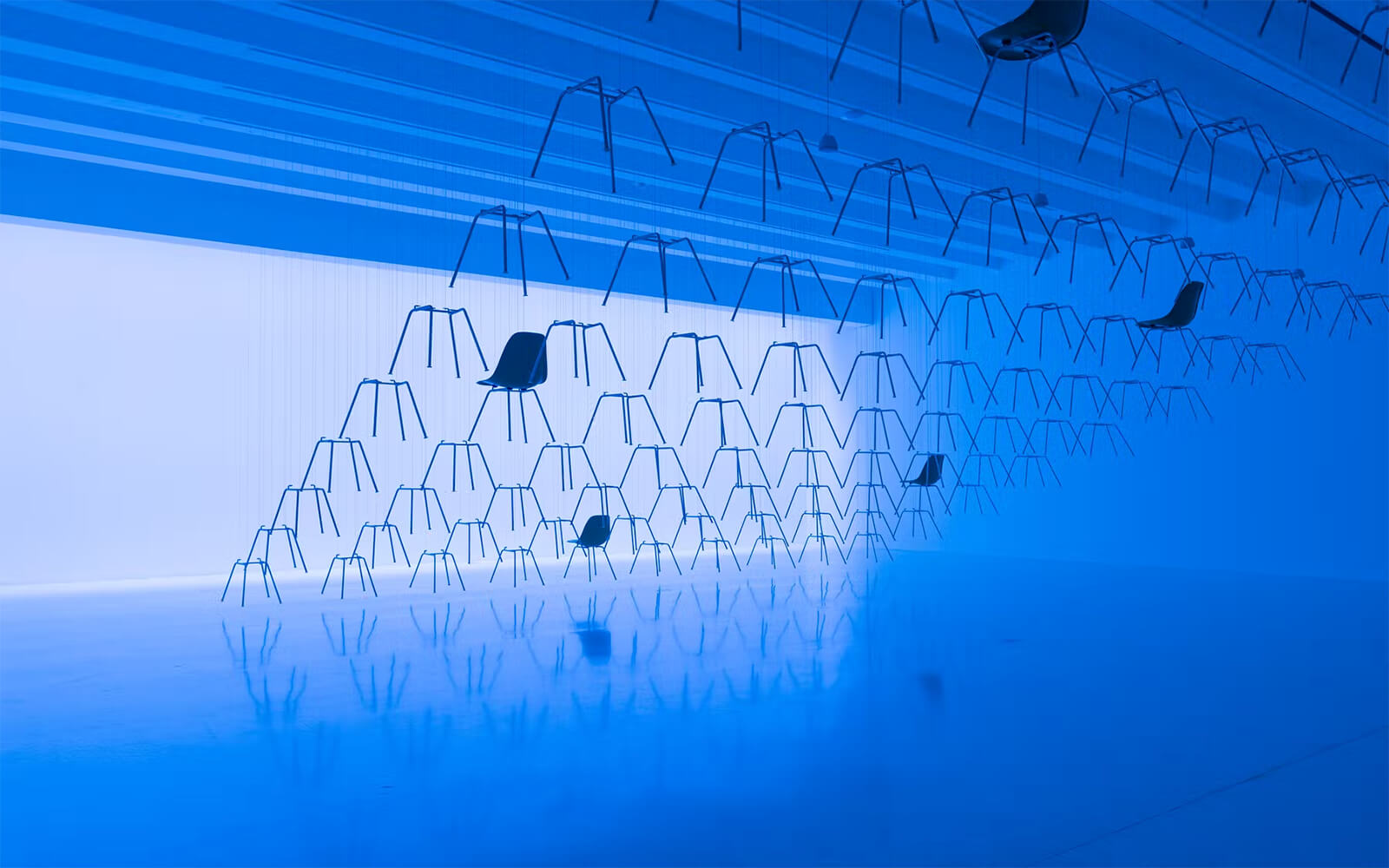1,569 days, 2,406 entries ...
Newsticker, link list, time machine: HOLO.mg/stream logs emerging trajectories in art, science, technology, and culture––every day
“The result is a fantasy—or nightmare—of computers as both preternatural agents of their own histories and autocratic engines of meaning.”
“I would say there is a circuit board aesthetic, a punch-card aesthetic, as well as an interest in pristine and gleaming metallic surfaces, reminiscent of the IBM mainframe.”
“I would really suggest experimenting with IBM’s public quantum computers using their Qiskit textbook, extracting data from various algorithms and then using that to generate forms using Processing or Unity or another digital software package.”
A shrine to IBM’s midcentury corporate aesthetic, Rayyan Tabet’s “Deep Blues” opens at Walker Art Center in Minneapolis. Illuminated by the melancholic glow of IBM’s 10 shades of blue, the installation references Eero Saarinen’s IBM Rochester design and Charles and Ray Eames work for the multinational—a matrix of their chairs hang overhead. Tabet’s nods to IBM’s design patronage coupled with AI-trained text-to-speech narration foreground the affect of knowledge work, and of a singular corporate identity.

“We realized we had to make our own supercomputer. So we built an AI which runs on custom hardware—/roʊˈdeɪoʊ/—that looks at the Kim Kardashian: Hollywood game and tries to make sense of what it’s seeing.”
“She was the first person to realize that this problem exists, to talk about it, and do academic work around it until the powers that be took notice.”
M
To dive deeper into Stream, please or become a .
Daily discoveries at the nexus of art, science, technology, and culture: Get full access by becoming a HOLO Reader!
- Perspective: research, long-form analysis, and critical commentary
- Encounters: in-depth artist profiles and studio visits of pioneers and key innovators
- Stream: a timeline and news archive with 1,200+ entries and counting
- Edition: HOLO’s annual collector’s edition that captures the calendar year in print
